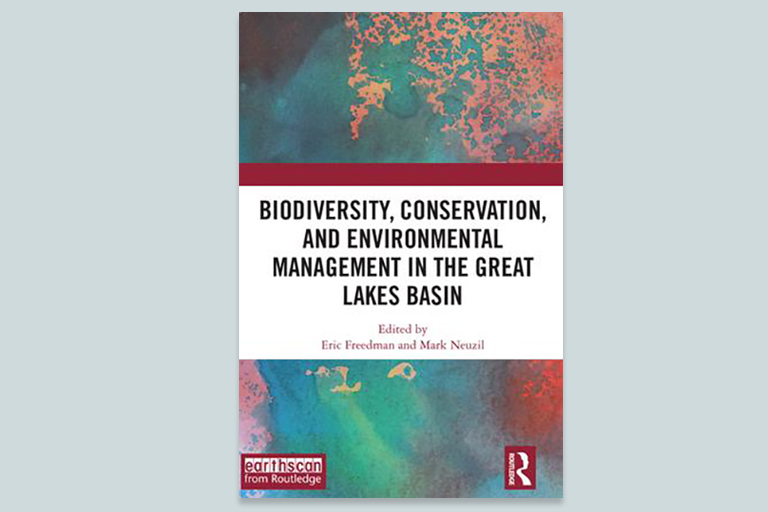Knight Center director Eric Freedman and University of St. Thomas journalism professor Mark Neuzil have just published their new book Biodiversity, Conservation and Environmental Management in the Great Lakes Basin.
The book provides a cross-section of key scientific, policy and public administration research that may help shape the Great Lakes Basin's future as ecologically unique and economically vital.
The Great Lakes Basin holds more than 20 percent of the world's fresh surface water. Threats to habitats and biodiversity there have economic, political, national security and cultural implications and ramifications that cross the U.S.-Canadian border.
The new book offers multidisciplinary perspectives on an array of environmental, biodiversity and conservation issues through the work of U.S. and Canadian researchers, practitioners, policy-shapers and scholars from a wide range of disciplines, including biology, fisheries and wildlife, forestry, chemistry, political science, economics, journalism, community sustainability and geography.
Knight Center research director Bruno Takahashi, Freedman and Knight Center doctoral students Ran Duan, Tony Van Witsen and Apoorva Joshi wrote one chapter on how the press framed coverage of the centennial of the death of the world's last passenger pigeon.
Other chapter authors from MSU are professors Daniel Hayes and Brian Roth and doctoral student Lisa Peterson of Fisheries & Wildlife; professor Gail Vander Stoep of Community Sustainability; professor Kyle Powys Whyte of Philosophy and Community Sustainability; and adjunct professor Therese Poland of Entomology.
Freedman and Neuzil approached the book project from multiple vantage points.
As scholars, they've researched how the media covers environmental issues in the Great Lakes Basin. As professors, they've taught environmental journalism. As professional journalists, they've explained the latest scientific discoveries to the public and reported on topics as diverse as pollution, natural resource policy, public land conflicts, artificial reefs and endangered birds.
As photographers, they've shot lighthouses, kayakers, wildlife, fish, rural cemeteries, vineyards and sand dunes. As long-time residents of the Great Lakes Basin, they've canoed its rivers, hiked and cross-country skied its trails, swum at its beaches, biked its back roads and camped at its parks.
And as authors, they've written books about its canoe heritage, its pioneering settlers, its forests, and its outdoor recreation opportunities.
It's their second collaboration for Routledge, an international publishing company. Their first joint project, Environmental Crises in Central Asia: From steppes to seas, from deserts to glaciers, appeared in 2016.
